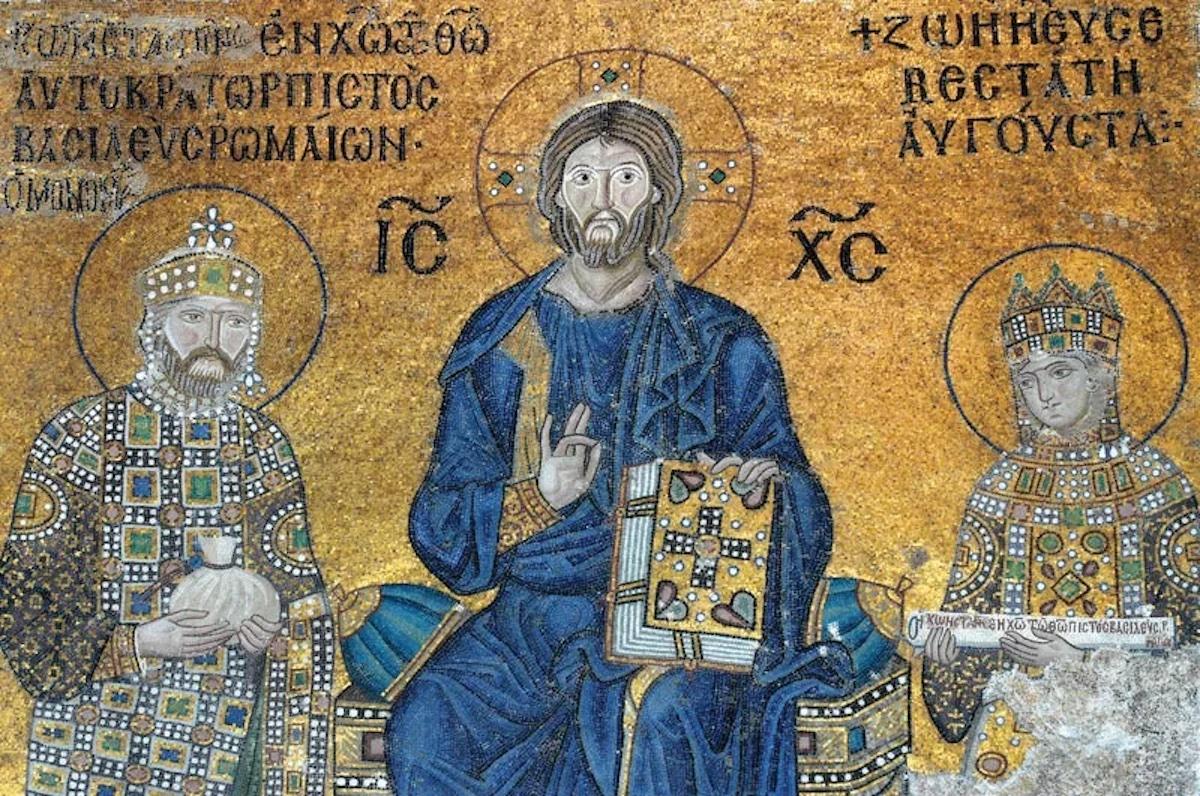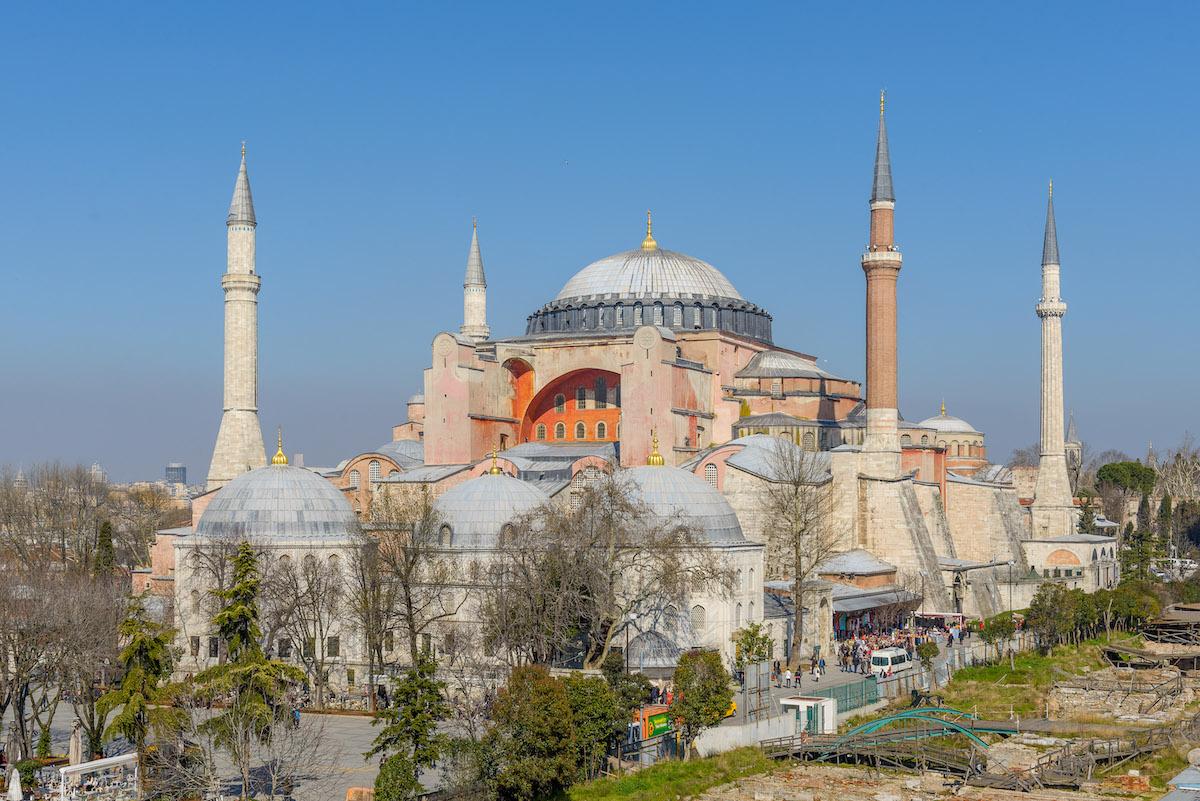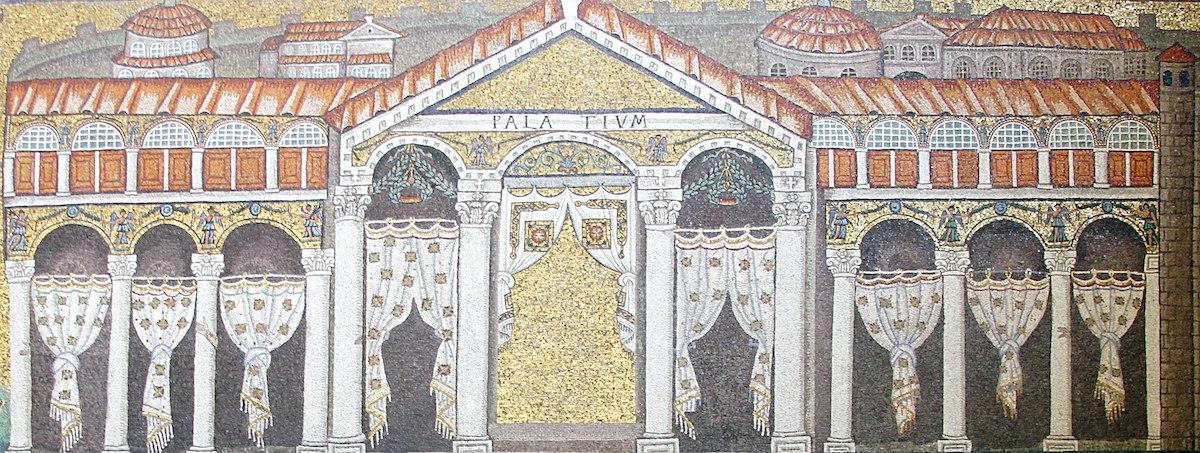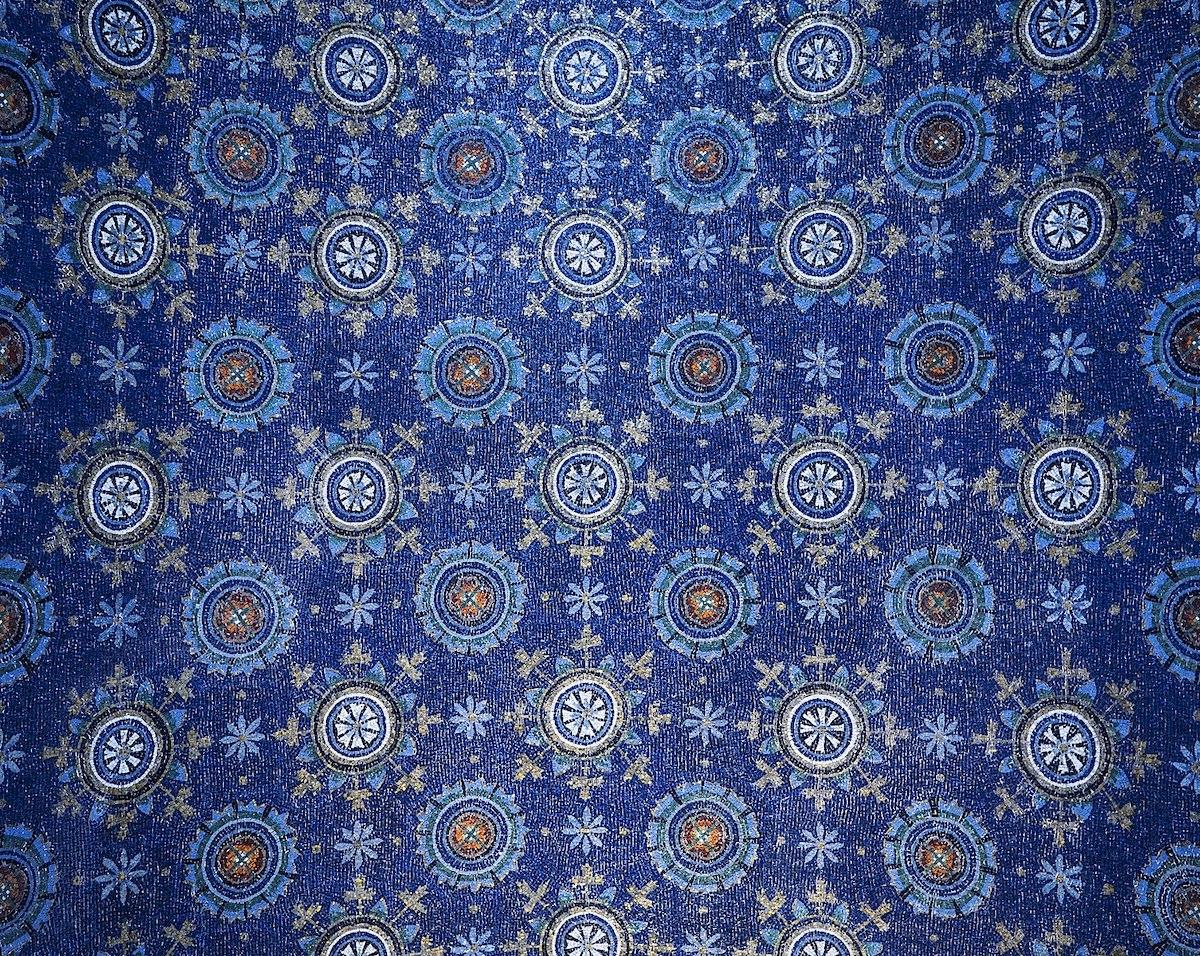Mosaics as a medium originate from Mesopotamia around the 5th century BCE, but dominated visual arts only in fifth- to fifteenth-century Byzantium. Ostrogoth King Theodoric (493 to 526 CE) brought the first fully realized sample of Byzantine art to Western Europe when he built the Basilica of Sant’Apollinare Nuovo in Ravenna, Italy, and the medium took hold as one that could both reflect divinity and physically interact with live audiences. Splendidly dressed visitors, clad in jewel-toned silks or polished military armor could glimmer and sparkle against the jagged glass and gem-encrusted mosaics. This relationship was fully realized when the Hagia Sophia became the imperial family’s primary church. Justinian I installed its first mosaics—though more were added through the twelfth century—into the reign of Empress Zoë Porphyrogenita (978 to 1050 CE). Angled tesserae in the wall decoration not only caught sunrises and nighttime candlelight but reflected human vestments to elevate worshippers into works of art themselves. This phenomenological effect, therefore, activates the mosaic from a passive artistic form and demands audience participation on political grounds.
One obvious instance of this apotheosis is the mosaic panel’s depiction of the Empress Zoë and her husband Constantine IX Monomachos (1000 to 1055 CE) flanking Jesus Christ. Manmade, over-embellished loros costumes and headpieces attempt to mimic Christ’s effortless power, juxtaposed with a simple, bold blue chiton and nimbus. Yet the image unites divinity with human politics and summarizes Constantinople’s ecumenical zeitgeist.
































